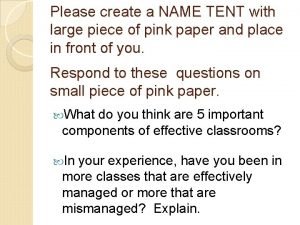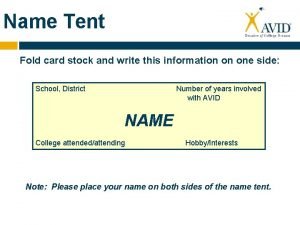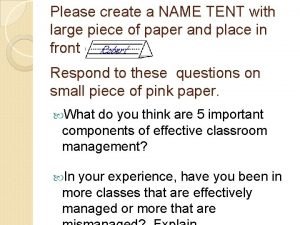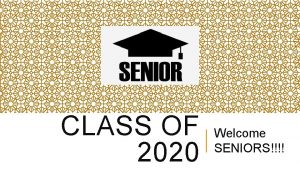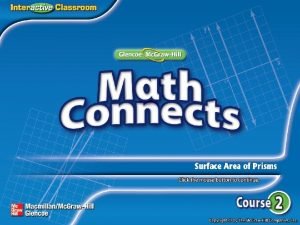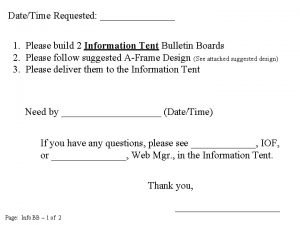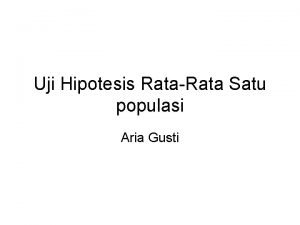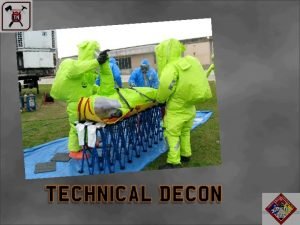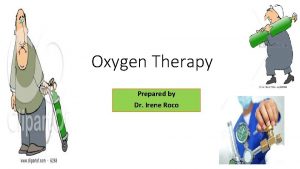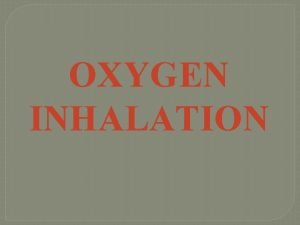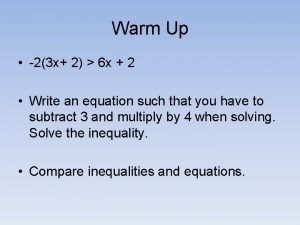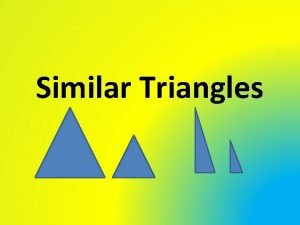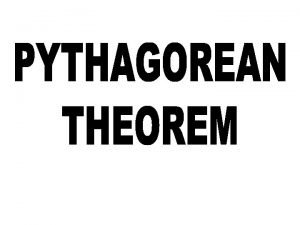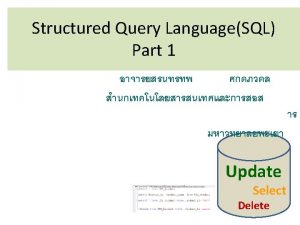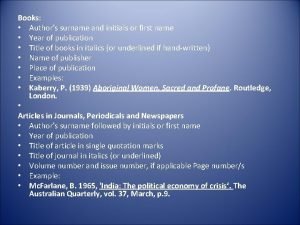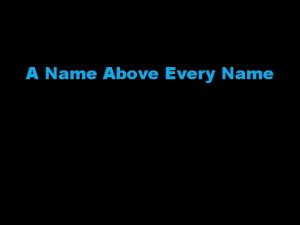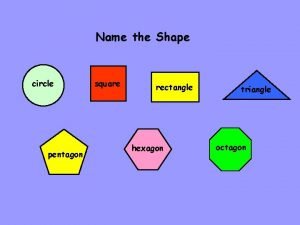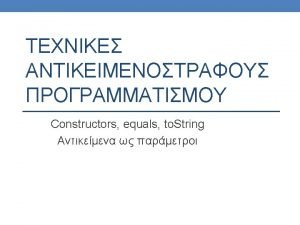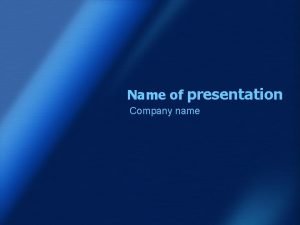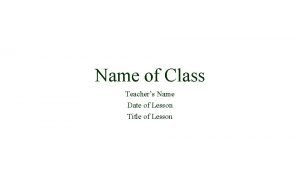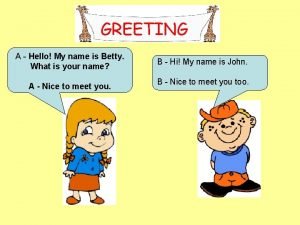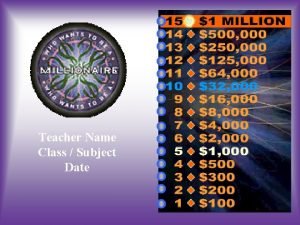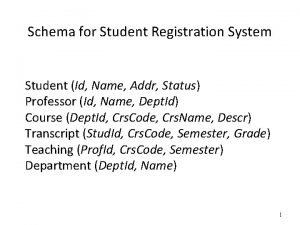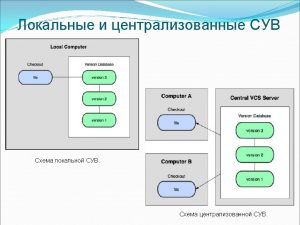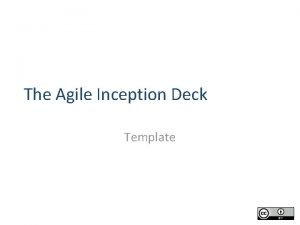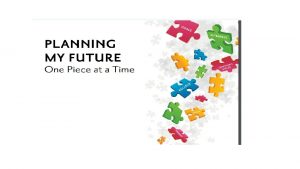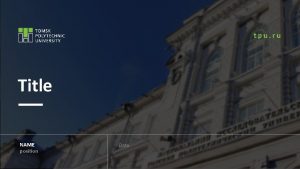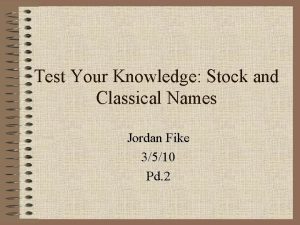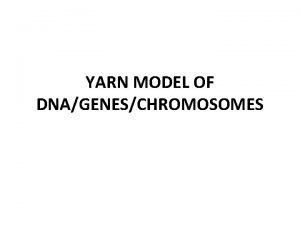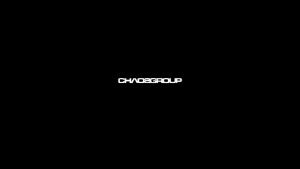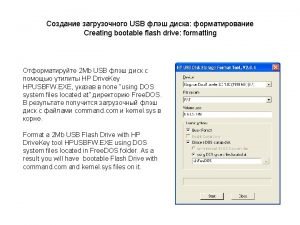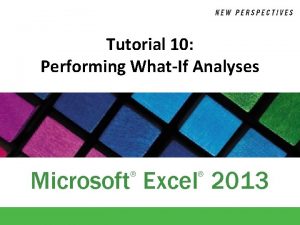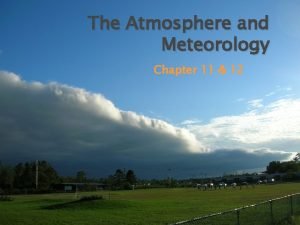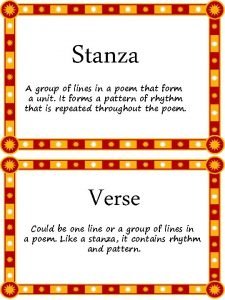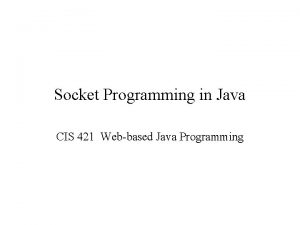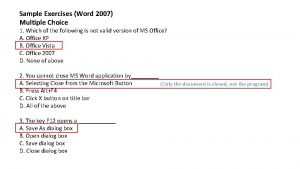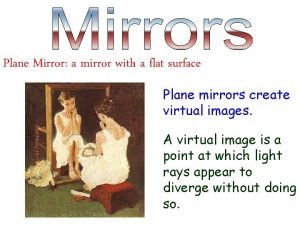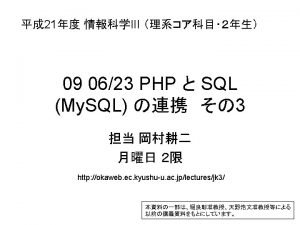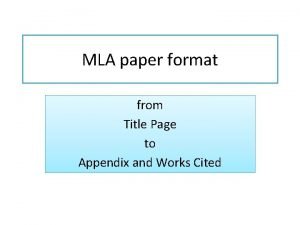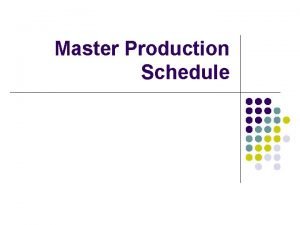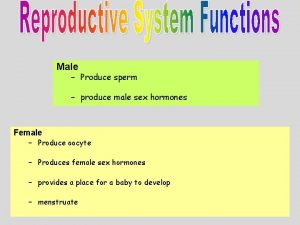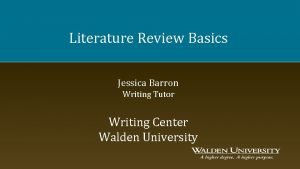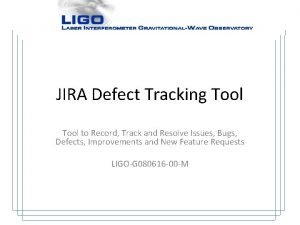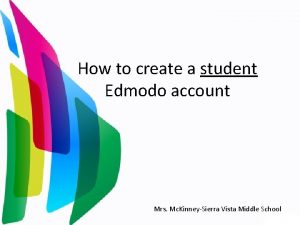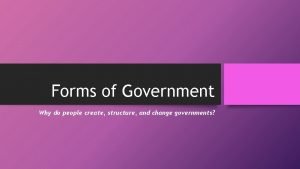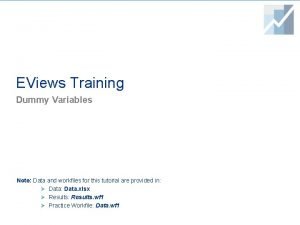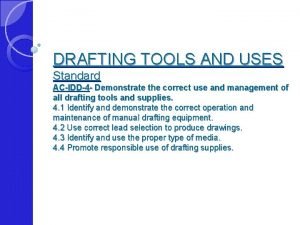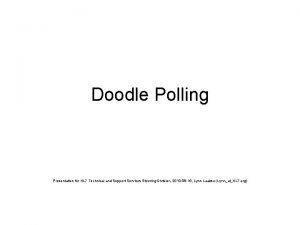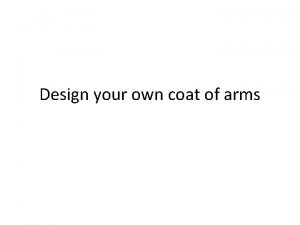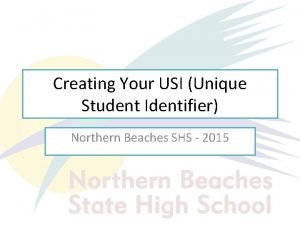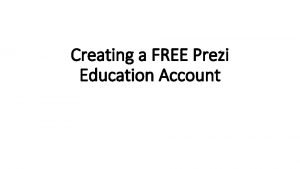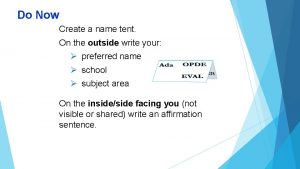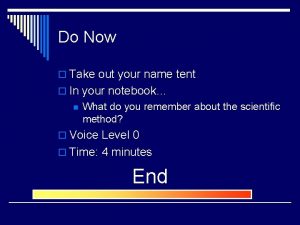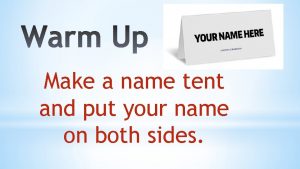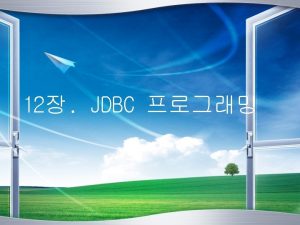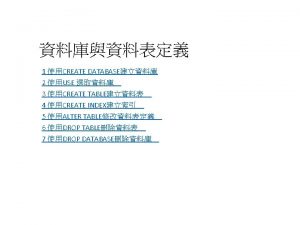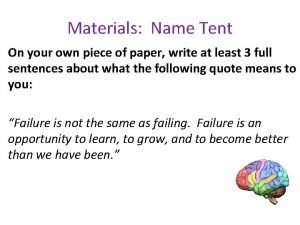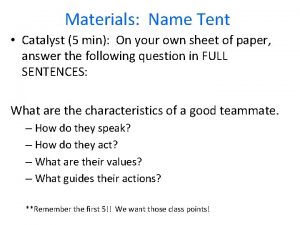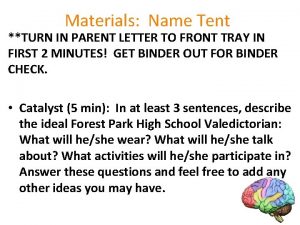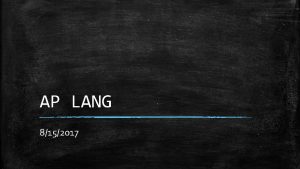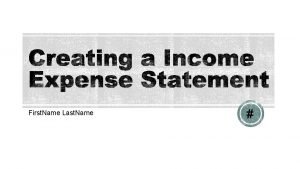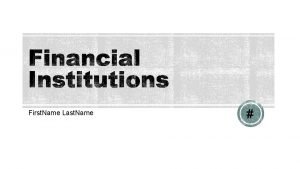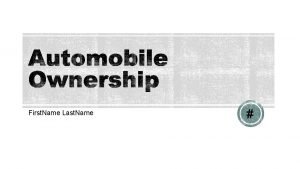Do Now Create a name tent On the




























































































































- Slides: 124

Do Now Create a name tent. On the outside write your: Ø preferred name Ø school Ø subject area On the inside/side facing you (not visible or shared) write an affirmation sentence.

Welcome to the Introduction of the Instructional Performance Evaluation and Growth System

Shared Agreements Ø Inquire with any questions Ø Participate actively Ø Engage with the material Ø Give your full attention Ø Set your learning into action

Agenda Ø Ø Ø Ø Ø Sign-In/credit procedures Purpose of IPEGS Performance Standards Observation of Standards Improving Professional Performance DPGT Process Required Documentation Evidence for Summative Evaluation Review and Closure

Learning Goals Ø Understand the IPEGS performance standards Ø Examine the terms and descriptions in the four-point rating system Ø Discuss how sources of evidence apply to the performance standards Ø Make meaning of the DPGT process Ø Explore the connection between DPGT and IPEGS Ø Recognize the procedures in the overall summative performance evaluation

IPEGS Resource The latest and most current information about IPEGS may be found at: ipegs. dadeschools. net

Purposes of IPEGS Ø Contribute to M-DCPS vision, mission, and goals Ø Share responsibility for evaluation between the professional and the evaluator Ø Ensure accountability for classroom/program performance Ø Focus on professional growth Ø Improve the quality of instructional services to increase student learning growth

Understandings In M-DCPS: The contract and IPEGS Handbook both support the work of the teacher. IPEGS is the evaluation system used to rate teachers. IPEGS is a reflection and evidence-based system. The IPEGS process is also collaborative, with both the administrator and the professional gathering evidence about the professional’s work.

Timeline Probationary Teacher Other Contract Status Teacher Within the 1 st 30 days All teachers new to a school or the district must be observed October 24, 2019 End of 1 st Nine Weeks DPGT Reflection and Development Phase Submission 2 weeks after submission DPGT Review and collaborative discussion with Administrator End of 1 st Nine Weeks First Observation End of 2 nd Nine Weeks Formative Evaluation End of 3 rd Nine Weeks Second Observation Apr 29, 2020 (35 Days before the end of the school year) DPGT Reflection and Outcome Phase Submission End-of-year Documentation Observation(s) can take place during the 1 st, 2 nd, and 3 rd Nine weeks

Who is Evaluated Using IPEGS? Instructional Personnel Categories Instructional Personnel for each handbook Categories Teachers Student Services* Instructional Support* Counselors, TRUST Specialists Curriculum Specialists School Social Workers Lead Teachers School Psychologists Library/Media Specialists Speech/Language Pathologists Program Specialists Other Positions Teachers on Special Assignment Other Positions * Job titles listed are samples of the many diverse positions within the instructional support and student services personnel categories.

Three Components of an IPEGS Evaluation ØLearner Progress ØProfessional Practices ØDPGT

Documenting Performance Ø Learner Progress Ø Professional Practices Required Documentation Evidence of Professional Learning Evidence of Communication Ø Deliberate Practice Growth Target leads to…. . Unified Summative Performance Evaluation using a Four-Point Rating System

Professional Practices Observable Standards Non-Observable Standards USR DPGT Learner Progress

Weightings Three Components • Learner Progress(Standard 1) = 34% • Professional Practices = 50% (Standards 2 -7 or 2 -8) • Deliberate Practice Growth Target = 16% Single Unified Summative Rating Weightings Subject to Change

Reflection Questions What does your administrator know about your teaching practice? What does your administrator NOT know about your teaching practice? For those things that the administrator does NOT know, how might you make sure the administrator has the relevant information about your teaching practice?

Question What do you think is at the heart of the IPEGS system?


Legend for IPEGS Performance Standards: Teachers Learner Progress Observable Standards Non-Observable Performance Standards 1. Learner Progress 5. Assessment 2. Knowledge of Learners 6. Communication 3. Instructional Planning 7. Professionalism 4. Instructional Delivery and Engagement 8. Learning Environment

Performance Standards for Teachers 1. Learner Progress (34%) The work of the teacher results in acceptable and measurable learner progress as specified in state statutes. 2. Knowledge of Learners (8%) The teacher identifies and addresses the needs of learners by demonstrating respect for individual differences, cultures, backgrounds, and learning styles. 3. Instructional Planning (8%) The teacher uses appropriate curricula, instructional strategies, and resources to develop lesson plans that include goals and/or objectives, learning activities, assessment of student learning, and home learning in order to address the diverse needs of students. 4. Instructional Delivery and Engagement (8%) The teacher promotes learning by demonstrating accurate content knowledge and by addressing academic needs through a variety of appropriate instructional strategies and technologies that engage learners.

Performance Standards for Teachers (Continued) 5. Assessment (6%) The teacher gathers, analyzes, and uses data (including required assessment data, if applicable) to measure learner progress, guide instruction, and provide timely feedback. 6. Communication (6%) The teacher communicates effectively with students, their parents or families, staff, and other members of the learning community. 7. Professionalism (6%) The teacher demonstrates behavior consistent with legal, ethical, and professional standards and engages in continuous professional growth. 8. Learning Environment (8%) The teacher creates and maintains a safe learning environment while encouraging fairness, respect, and enthusiasm.

Instructional Support and Student Services Professionals Legend for IPEGS Performance Standards: Learner Progress Observable Standards Non-Observable Performance Standards 1. Learner/Program Progress 5. Assessment 2. Knowledge of Learners 6. Communication 3. Program Management 7. Professionalism 4. Program Delivery

Performance Standards for Instructional Support and Student Services Professionals 1. Program Progress (34%) The work of the student services/instructional support professional results in acceptable and measurable learner or program progress as specified in state statutes. 2. Knowledge of Learners (9%) The student services/instructional support professional identifies and addresses the needs of the target learning community by demonstrating respect for individual differences, and understanding of cultures, backgrounds, and learning styles. 3. Program Management (9%) The instructional support professional plans, organizes, promotes, and manages programs and/or services to meet the diverse needs of all learners. The student services professional plans, organizes, and manages programs and/or services to meet the diverse needs of all learners. 4. Program Delivery (9%) The instructional support professional uses knowledge of subject/content/field/technology to implement services for the targeted learning community consistent with established standards and guidelines. The student services professional uses knowledge of subject/content/field/technology to implement services for learners and the learning community consistent with established standards and guidelines.

Performance Standards for Instructional Support and Student Services Professionals (Continued) 5. Assessment (9%) The instructional support professional gathers, analyzes, and uses data (including required assessment data, if applicable) to measure and guide learner or program progress, and to provide timely feedback. The student services professional gathers, analyzes, and uses data (including required assessment data, if applicable) to measure and guide learner or program progress and to provide timely feedback. 6. Communication (7%) The instructional support professional communicates effectively with learners, their parents or families, staff, and other members of the learning community. The student services professional communicates effectively with learners, their parents or families, staff, and other members of the learning community and advocates for learners. 7. Professionalism (7%) The student services/instructional support professional demonstrates behavior consistent with legal, ethical, and professional standards and engages in continuous professional growth.

Check for Understanding How do you know whether you have 7 or 8 performance standards that you are expected to demonstrate in your work?

IPEGS Performance Standards Activity In your group, review the eight performance standards in the IPEGS Performance Standards Handout. Using the performance standards, demonstrate your understanding of performance standards 1 -8 using the designated strategies in each box. Standard 1 – Standard 2 – list four key words draw a pictorial representation Standard 5 – Standard 6 – list four key words draw a pictorial representation Standard 3 – write three bulleted phrases Standard 7 – write three bulleted phrases Standard 4 – write a one sentence summary Standard 8 – list four key words

Select and Share Protocol with IPEGS Performance Standards Activity Complete the 8 quadrants. Select a spokesperson for your table. Ø The facilitator calls on a table to report on standard 1. Ø The spokesperson from that table shares, and then calls on a second table Ø The second spokesperson will call on a third table After the spokesperson from the third table shares, that spokesperson will: Ø Pause Ø Ask, “ Are there any additions or amendments? ” Ø Confirm agreement Ø Call on the first table to report on the next standard

Rating Performance Four-point Rating Scale Ø Highly Effective - High-quality performance; exceeds the requirements contained in the standard(s) as expressed in the evaluation criteria; consistently seeks opportunities to learn and apply new skills Ø Effective – Effective performance; meets the requirements contained in the job description as expressed in the evaluation criteria; demonstrates willingness to learn and apply new skills; exhibits behaviors that have a positive impact on learners and the school climate

Rating Performance Ø Developing/Needs Improvement – Ineffective performance; requires support in meeting the standard(s); results in less than quality work performance; leads to areas of professional improvement being jointly identified and planned between the professional and assessor Ø Unsatisfactory – Poor quality performance; fails to meet the requirements contained in the standard(s) as expressed in the evaluation criteria A rating of “Developing” can only be assigned in a professional’s first 3 years. The final summative performance evaluation indicates recommended or not recommended for continued employment

Rubric Activity Ø Use the IPEGS Performance Standards and Rubrics Handout. Ø Identify common terminology for the Performance Standards of the rubric on all 8 or all 7 performance standards for Unsatisfactory and Developing/Needs Improvement. Ø Identify language differences between Effective and Highly Effective.

Rubric Activity Ø Use the IPEGS Performance Standards and Rubrics Handout. Ø Identify Step one common terminology for the Performance Standards of the rubric on all 8 or all 7 performance standards for Unsatisfactory and Developing/Needs Improvement. Ø Identify language differences between Effective and Highly Effective.

Rubric Activity Ø Use the IPEGS Performance Standards and Rubrics Handout. Ø Identify Step two common terminology for the Performance Standards of the rubric on all 8 or all 7 performance standards for Unsatisfactory and Developing/Needs Improvement. Ø Identify language differences between Effective and Highly Effective.

Rubric Activity Ø Use the IPEGS Performance Standards and Rubrics Handout. Ø Identify common terminology for the Performance Standards of the rubric on all 8 or all 7 performance standards for Unsatisfactory and Developing/Needs Improvement. Step three Ø Identify language differences between Effective and Highly Effective.

Professional Practices Observable Standards Non-Observable Standards USR DPGT Learner Progress

Observation Details Observations… Ø may be scheduled or unscheduled, but must be consistent within the school Ø must last at least 20 consecutive minutes

Observation(s) by Contract Status Probationary Contract Required Minimum Number of Observations a Year 2 Annual Contract 1 Professional Service Contract 1 Continuing Contract 1

Observation Timeline Activity By the end of Initial observation of all NEW the first (Probationary Contract Status) grading period personnel, inclusive of the post(10/25/19) observation meeting. By the end of the third grading period (03/20/2020) Second observation of Probationary Contract Status professionals, inclusive of the post-observation meeting. Observation of professionals with any other contract status.

Capturing Evidence During an Observation During an observation, An assessor will capture sufficient evidence to complete the Observation of Standards Form Ø What is the professional doing? Ex: Reviewed the home-learning assignment Ø What are the students doing? Ex: Students were engaged after transitioning from the previous activity Ø What are other sources of evidence? Ex: Student work folders include up-to-date graded assignments with feedback A teacher should consider what evidence of the observable standards is evident during the lesson, and what additional evidence the professional might wish to bring to a post-observation meeting.

Preparing for the Post Observation Conference (Teacher Reflection) Ø What is something you want your administrator to know about your practice? Ø How could you share this information with your administrators? Ø What might you bring to a post- observation meeting that might provide evidence of that?

Preparing Comments for the Observation of Standards Form (OSF) (Administrator Responsibilities) Ø Create a picture of what occurred Ø Identify applicable standards and organize the information Ø Provide descriptive and detailed information about each observable standard Ø Record the evidence on the OSF

Post Observation Meeting Ø Meeting occurs within 10 calendar days of the observation. Ø Professional and assessor review and discuss evidence observed. Ø Professional may offer additional evidence. Ø Assessor may offer suggestions for improvement. No rating is generated at this meeting. Ratings are assigned during the summative evaluation process.

rm o F s d r da n a St f n o o i t rva e s Ob

rm s o F or t s a d r c da Indi n Sta dard f o tan f 2 n o ati ce S e 2 o v r se rman Pag b O rfo Pe

Possible Outcomes of an Observation The OSF becomes evidence for the Professional Practices part of the evaluation. OR In the event that an area of improvement is identified during the observation, then a Support Dialogue (SD) is initiated.

Improving Professional Performance Independent Support Suggested Support Ø An administrator recommends an area for growth Ø Professional receives a change of assignment (Mid-Year or Year-to-Year)

Professional Practices Observable Standards Non-Observable Standards USR DPGT Learner Progress

Performance Standard 5: Assessment The teacher gathers, analyzes, and uses data (including required assessment data, if applicable) to measure learner progress, guide instruction, and provide timely feedback. Samples: Ø Evidence of assessment data: state/local, student work folders, electronic data, IEP’s etc. Ø Evidence of a connection between the data and instructional practices Ø Evidence of timely feedback

Performance Standard 6: Communication The teacher communicates effectively with students, their parents or families, staff, and other members of the learning community. Evidence may include: And may be presented in various formats: E-mails Log Meeting Agendas Bulleted list Data Chat Notes Summary paragraph Community Involvement Flyer Copies of e-mails, newsletters, etc. Parental Workshop notice

Performance Standard 7. Professionalism The teacher demonstrates behavior consistent with legal, ethical, and professional standards and engages in continuous professional growth. Professional Development And may be presented in Evidence may include various formats: activities such as: Professional Development Log Reading Education Journals Bulleted list Attending education/ leadership conferences Summary paragraph Sharing in PLC or Lesson Study Groups Copies of e-mails, newsletters, etc. Focus on Deliberate Practice

Performance Standard 7. Professionalism The teacher demonstrates behavior consistent with legal, ethical, and professional standards and engages in continuous professional growth. Resources for legal, ethical, and professional standards: Florida Educator Professional Standards: http: //www. fldoe. org/teaching/professional-dev/the-fl-educator-accomplishedpractices. stml Florida Ethics Principles: http: //www. fldoe. org/teaching/professional-practices/code-of-ethics-principles-ofprofessio. stml Florida Education Laws: http: //www. fldoe. org/policy/edu-laws-legislation/ School Board Policies: http: //www. neola. com/miamidade-fl/ M-DCPS/UTD Contract: http: //www 2. dadeschools. net/employees/labor_union/UTD/index. htm

Gallery Walk Activity While preparing for a Gallery Walk with your group, Ø designate a recorder to write the title and set up a twocolumn notes chart for your assigned standard. Ø designate a facilitator to monitor the Gallery Walk process for your group. Your poster should look like this. PS 2: Knowledge of Learners Look Fors: Red Flags:

Gallery Walk Presentations To prepare for your group presentation: Ø designate a speaker Ø designate a “poster child” Ø designate a “Vanna White” or “Van White” PS 2: Knowledge of Learners Look Fors: Red Flags:

“Look Fors” and “Red Flags” Gallery Walk Each group will be assigned a colored marker and a standard. Each round is 3 minutes. Ø Use the IPEGS Standards and the IPEGS Performance Standards Activity handout during the gallery walk Ø Write two (2) “Look Fors and two (2) “Red Flags” Ø At the signal for the next round, move to the next standard. Add a checkmark if your group agrees with a detail already noted on the chart, but make sure to add two new ones as well. Ø The rotation is repeated until you return to your original standard. Ø As a group, choose your top two “Look Fors” and the top two “Red Flags” on the chart(s). Ø Designate a group member to report out on the group’s top two “Look Fors” and “Red Flags, ” along with the group’s rationale for their choice. Anchor the response in the language of the standard.

Gallery Walk Presentations Present your group’s top 2 Look Fors and Red Flags, your rationale, and how they are supported by the language of the standard. Ø Select a spokesperson. Ø The facilitator will call on the spokesperson for standard 2. Ø The spokesperson will: read the standard, share the group’s responses, ask for additions or amendments, and confirm agreement Ø Then the spokesperson will call on the spokesperson for the next standard. Ø Repeat process for the remaining standards.

Reflection Which of the IPEGS Standards do you already know well and could provide evidence of in your work? and Which of the IPEGS Standards would you like to study more, implement more effectively, or learn how to better gather evidence for? Why?

Improving Professional Performance 1) Support Dialogue (SD) Professional’s performance is not meeting the standard. Professional is notified of a scheduled SD meeting within 10 calendar days of an observation. Support Dialogue (SD) Meeting Notification Form must be issued no later than forty-eight (48) hours prior to the SD meeting Process takes twenty-one calendar days; can be extended up to ten (10) work days 2) Improvement Plan (IP) Performance is unsatisfactory in any standard. Process occurs after completion of unsuccessful Support Dialogue (SD).

Support Dialogue (SD) Designed to facilitate discussion about identified performance standard(s) and ways to address improvement Ø Includes a 21 -Calendar day period to receive support and implement changes in performance Ø Both parties share what each will do to support the professional’s growth Ø Includes the professional’s right to union representation and/or peer support Ø Ø May result in the professional being Effective, SD extended, or an Improvement Plan(IP)

Support Dialogue Discussion IPEGS Procedural Handbook: IPEGS Support Dialogue Meeting Notification Form (FM 7406)

Improvement Plan (IP) Ø Ø Ø Initiated after Support Dialogue(SD) has been completed Implemented when the professional’s performance remains unsatisfactory in one or more standard(s) Developed collaboratively by the site administrator and the professional, with union representation, if desired A 90 -Calendar Day Probation Period Desired outcome is to improve the professional’s performance to an effective level May result in being not recommended for continued employment

Improvement Plan Sequence of Events

Improvement Plan (IP) If the IP cannot be completed before the end of the school year, it is continued to the next year and the summative evaluation is withheld until the process is completed. A transfer does not extend the period of the IP.

Improvement Plan Form IPEGS Procedural Handbook: IPEGS Improvement Plan Form (FM 7311)

Professional Practices Observable Standards Non-Observable Standards USR DPGT Learner Progress

Performance Standard 1: Learner Progress The work of the teacher results in acceptable and measurable learner progress as specified in F. S. 1012. 34 Pursuant to state statute 1012. 34, as amended in 2011 under the Student Success Act, and updated in 2015 through House Bill (HB) 7069, at least one-third of an instructional professional’s evaluation must be based on student learning growth assessed annually and measured by statewide assessments or, for subjects not measured by statewide assessments, by district assessments as specified in 1008. 22.

Independent Support and Growth Experiences Required Support (Based on a USR rating) The Unified Summative Rating (USR) is less than Effective (The USR includes three components: VAM, Professional Practices, and Deliberate Practice Growth Target)

Professional Practices Observable Standards Non-Observable Standards USR DPGT Learner Progress

Excerpt from Florida Statute 1012. 98 “… school principals may establish and maintain an individual professional development plan for each instructional employee assigned to the school as a seamless component to the school improvement plans. ”

Deliberate Practice Growth Target A Guide for Professionals

Partner Talk Protocol Professional Effectiveness 1. Which standard would you like to work on to improve your practice? Why? 2. How can you use deliberate practice to improve in this area? 3. How will improving in this area impact student learning?

DPGT Procedures Guide Key Components of the Reflection and Development Phase 1. Data Collection Focus 2. Needs Assessment 3. Growth Target 4. Plan of Action 5. DPGT Form Key Components of the Reflection and Outcome Phase 6. Impact 7. Complete the DPGT Process The steps outlined on the following slides will help you understand how to complete the DPGT process.

DPGT Process Reflection and Development Phase Step 1: Data Collection Collect information and data on your professional practice and on student learning. What sources of qualitative or quantitative data can you use to identify areas for your professional growth and to determine your students’ needs?

Step 1: Examples of Qualitative and Quantitative Data Ø Ø Ø Ø Ø Accelify Anecdotal Records Baseline Assessments Climate Surveys Diagnostic Assessments FAB/BIP IEPs Learning Styles Inventory Logs and Journals Ø Ø Ø Ø Previous Academic Performance Previous IPEGS evaluations Professional Reflection School Improvement Plan Student Observations Student Portfolios Student Surveys

DPGT Process Reflection and Development Phase Step 2: Needs Assessment/Focus Select one area of focus expected to impact professional practices and support student learning. What areas of self-improvement might be your primary focus? Based on the area chosen, think about what instructional practices might help you to grow professionally and improve student(s) learning.

Focus Reflection What aspect of practice does the professional want to work on for this school year? Professional/Student/Program Data What data or information can be used to narrow that focus? Focus How will addressing the targeted area of focus enhance professional practices and improve student learning?

Step 2: Needs Assessment/Focus Examples Sample Objectives Ø To improve mathematics teaching methods Ø To create a monitoring system that will assist students in planning for educational and vocational choices Ø To provide more Inquiry-Based strategies for science Ø To incorporate authentic English/Language Arts (ELA) critical thinking strategies during instruction

DPGT Process Reflection and Development Phase Step 3: Growth Target Determine a deliberate growth target that addresses professional practices that impact student learning. Based on your focus, think about the growth target as it impacts student learning.

Growth Target Professional Learning What does the professional plan to learn to improve practice in regards to the area of focus? Student Learning Outcomes What are the projected student gains?

Step 3: Growth Target Example of a deliberate practice growth target: I will engage in professional learning to become more knowledgeable about the application of Mathematics Florida Standards. As a result, students will be able to access the curriculum at their instructional level and demonstrate improvement in math literacy. __________ _________ What general steps will you take How will the steps address towards your target? student learning?

DPGT Process Reflection and Development Phase Step 4: Plan of Action Describe the specific professional learning [i. e. , professional development (PD) and/or professional growth experience(s)] that will help you to achieve your deliberate practice growth target.

Plan of Action What actions will the professional take to meet the growth target?

Step 4: Plan of Action Example I plan to attend scheduled mathematics professional development activities. Additionally, I will observe a peer and reflect with a colleague each quarter to strengthen my professional practice. Professional Learning Professional Growth Experiences Professional Development Activities (points or credits may be attached) (points or credits must be attached) I plan to ______________________________.

DPGT Reflection and Development Phase Rubric Terminology IN PROGRESS COMPLETE The professional is in the process of developing a DPGT and/or awaiting the DPGT planning conversation. The professional has completed the DPGT Development Phase and the planning conversation has occurred. VS.

Rubric for DPGT Reflection and Development Phase DPGT Development Complete The Professional has completed the DPGT Development Phase and the Planning conversation has occurred. 5. 6 Points: ______ In Progress The professional is in the process of developing a DPGT and/or awaiting the DPGT planning conversation. 0 Points: _____

The DPGT submission process is now electronic. Details are on the next slide. Step 5: DPGT Form Meet with administrator to review and sign the DPGT form. ide. l s t x he ne t n o are Professional’s Signature: ____________________ Date: _____ s l i a t. De c i n o r elect w o n ss is e c o r Principal’s/Site Administrator's/ ion p s s i m T sub G Designee’s Signature: _____________________ Date: _____ P D The Note: The DPGT form may be revised at any time as needed. The DPGT submission process is now electronic. Details are on the next slide. DPGT Process Reflection and Development Phase

DPGT Process: Electronic Submission To submit your DPGT: Go to: hrinfo. dadeschools. net/dpgt Log in with your: Employee Number (XXXXXX) Password: Last 4 of your SS # (XXXX) This is NOT the same process as logging in to the portal or to My Learning Plan. Log in so the DPGT system will recognize you. Log out and contact your administrator so they can “override” your form. Log back in after they have done so, complete and submit your DPGT.

Time Flies Your DPGT should be implemented throughout the school year. Check-in periodically to make adjustments and changes as needed and monitor your progress towards your growth target.

DPGT Process Reflection and Outcome Phase Step 6: Impact Describe how your professional growth target has been achieved and the impact on your professional growth and student(s) learning. How do you know that you met your goal? Refer to your Deliberate Practice Growth Target form and data. What is your evidence? (i. e. , PLC logs/agendas; formal and informal assessment data; student attendance logs; student work, professional reflection documentation)

Impact Progress Monitoring How did the professional monitor progress toward the goal? Were any modifications needed? Outcome What has been the impact on the professional’s growth and student learning?

Step 6: Impact Example As a result of attending mathematics trainings, observing a peer, and reflecting with a colleague, I gained new knowledge and instructional strategies. As a result of integrating these strategies, my students demonstrated increased math literacy as evidenced by improved scores on the topic assessments throughout the course of the year.

DPGT Reflection and Outcome Phase Rubric Terminology Meets Partially Meets Does Not Meet The professional successfully implements the DPGT and the impact statement includes thoughtful reflection, evidence of information used to monitor progress of the DPGT, explanation of any necessary adjustments, and an analysis of both the individual’s professional growth and how it impacts student learning. The professional implements the DPGT, but the impact statement is inadequate because it is missing one or more of the required elements: thoughtful reflection, monitoring information, adjustments, or it is missing clear evidence of the expected impact of the individual’s professional growth on student learning. The professional’s impact statement is missing or does not reflect implementation of the DPGT.

Rubric for DPGT Reflection and Outcome Phase Trace the implementation of your DPGT throughout the school year. Include information about how you reflected on your plan of action, what information you utilized to determine the impact of your professional learning on student growth, whether or not you made any adjustments to the implementation, and how you would describe the final impact (or end result) of your professional growth on student learning. Phase DPGT Outcome Meets Partially Meets Does Not Meet The professional successfully implements the DPGT and the impact statement includes thoughtful reflection, evidence of information used to monitor progress of the DPGT, explanation of any necessary adjustments, and an analysis of both the individual’s professional growth and how it impacts student learning. The professional implements the DPGT, but the impact statement is inadequate because it is missing one or more of the required elements: thoughtful reflection, monitoring information, adjustments, or it is missing clear evidence of the expected impact of the individual’s professional growth on student learning. The professional’s impact statement is missing or does not reflect implementation of the DPGT. 10. 4 Points: ______ 0 Points: ______

Rubric for DPGT Reflection and Outcome Phase Trace the implementation of your DPGT throughout the school year. Include information about how you reflected on your plan of action, what information you utilized to determine the impact of your professional learning on student growth, whether or not you made any adjustments to the implementation, and how you would describe the final impact (or end result) of your professional growth on student learning. Phase DPGT Outcome Meets Partially Meets The professional successfully implements the DPGT and the impact 1 statement includes thoughtful reflection, 2 evidence of information used to monitor progress of the DPGT, 3 explanation of any necessary adjustments, and an analysis of both 4 individual’s the professional growth and 5 how it impacts student learning. The professional implements the DPGT, but the impact statement is inadequate because it is missing one or more of the required elements: thoughtful reflection, monitoring information, adjustments, or it is missing clear evidence of the expected impact of the individual’s professional growth on student learning. The professional’s impact statement is missing or does not reflect implementation of the DPGT. 4 Points: ______ 0 Points: ______ 10. 4 Points: ______ Does Not Meet

The DPGT submission process is now electronic. Step 7: Completion of DPGT Process Complete the DPGT form. Note: The completed form will be reviewed and signed by the professional and the site administrator. The completed and signed form must be included in the end-of-year documentation submitted by the professional. ic. n o r lect e w no Professional’s Signature: ____________________ Date: _____ s i s oces r p ion s s i ubm s T Principal’s/Site Administrator's/ DPG e h T Designee’s Signature: _____________________ Date: _____ The DPGT submission process is now electronic. DPGT Process Reflection and Outcome Phase

2019 -2020 DPGT Form 19 e 0 Du 24, 2 er b to Oc Due April 29, 2020

Lily Pond’s DPGT Information 1, 2, 3 Strategy Place a check mark on each stage of the Reflection and Development Phase of the form if there is a completed: • focus statement • growth target statement • plan of action statement

Lily Pond’s DPGT Information CUBES Strategy Circle thoughtful reflection. Underline evidence of information used to monitor progress of the DPGT. Box the explanation of any necessary adjustments. Exclaim (place an exclamation mark) by the analysis of the professional’s growth. Star the analysis of the impact on student learning. ! !

2019 -20 DPGT Process Important Dates Reflection and Development Phase October 25, 2019 (the professional submits) November 15, 2019 (designated administrator signs) Reflection and Outcome Phase April 30, 2020 (the professional submits) May 28, 2020 (the designated administrator signs)

Professional Practices Observables Non. Observables USR DPGT Learner Progress

Summative Evaluation

What is Submitted with the Documentation Cover Sheet? Teachers: Instructional Support and Student Services: ü Completed Evidence of Professional Learning: Professional Development and /or Professional Growth Experiences ü Completed Evidence of Professional Learning: Professional Development and /or Professional Growth Experiences ü Completed Evidence of Communication OPTIONAL DOCUMENTATION ü relevant evidence that helps to show that a standard has been met ü sample product Required documentation must be submitted at least 35 calendar days prior to the last day of the school year.


End-of-Year Summative Performance Evaluation The professional and the administrator meet to review the evaluation and the points awarded for each part. A provisional recommendation for employment is made. The professional and the administrator sign the form.

What Elements are Factored into the Summative Evaluation Decision? Learner Progress (IPEGS Performance Standard 1) (34 percentage points) Professional Practices (50 percentage points) Ø IPEGS Performance Standards 2 -8 for Teachers Ø IPEGS Performance Standards 2 -7 for Instructional Support and Student Services Professionals Evidence from classroom observation(s) Evidence of professional learning Evidence of communication Other relevant sources, including evidence offered by the professional Deliberate Practice Growth Target (DPGT) (16 percentage points) Ratings are based on well-defined rubrics for each performance standard.

IPEGS Component 1 Performance Standard 1: Learner Progress Contribution to the total rating 34% based upon Student Learning Growth (Total of 34 possible percentage points) Highly Effective 34 percentage points Effective 25. 5 percentage points Developing/ 17 percentage points Needs Improvement Unsatisfactory 8. 5 percentage points

Independent Support and Growth Experiences Required Support (Based on the USR) Ø The Unified Summative Rating (USR) is less than Effective Ø The professional will be provided with Professional Growth Experiences (PGEs) (The USR includes three components: VAM, Professional Practices, and Deliberate Practice Growth Target)

IPEGS Component 2 IPEGS Performance Standards 2 -8 (Total of 50 possible percentage points) 32 percentage points Observable Standards Plus 18 percentage points Non-Observable Standards

IPEGS Component 3 Deliberate Practice Growth Target (Total of 16 possible percentage points)

The Unified Summative Rating How is it calculated? Performance Standard 1 Performance Standard 2 -8 or 2 -7 Deliberate Practice Growth Target Unified Summative Rating (34%) (50%) (16%) (100%)

Components 1, 2, and 3 Percentage Points for the Unified Summative Rating This scale is for EXAMPLE purposes ONLY. M-DCPS and UTD negotiate the score ranges annually and "cut scores" are jointly determined EACH year. 90% - 100% = Highly Effective 80% - 89. 99% = Effective 40% - 79. 99% = Developing (Years 1, 2, or 3 only) 40% - 79. 99% = Needs Improvement (Years 4 and above) 0% - 39. 99% = Unsatisfactory See ipegs. dadeschools. net for the current information.


Review Process A professional may request a review of up to three standards. The formal request and all supporting documents must be submitted no later than 7 days after the last day of the school year for professionals. Appendix B of the IPEGS Procedural Handbook details all of the steps in the Request for Review process. The Request for Review process is initiated at the end of the school year, but is not completed until the following school year when the Final Summative Rating is determined.

IPEGS Highlights Ø Unified Summative Performance Rating 4 defined levels (HE, E, D/NI, U) Ø Rating Based on a Mathematical Calculation 34% IPEGS Performance Standard 1: Learner Progress 50% IPEGS Performance Standards 2 -8 or 2 -7 (Professional Practices) 16% Deliberate Practice Growth Target Ø Provisional Summative Evaluation Rating (90 -day window to modify based on data) Ø Impact of Contract Status on Teacher Evaluation Schedule

IPEGS Strategies Please think about ways that you can: Ø participate in the collaborative activities (such as DPGT discussion and summative meeting) Ø stay organized Ø submit appropriate documents Ø meet all deadlines in order to meet your professional responsibilities as required by IPEGS.

Revisiting our Learning Goals Can you… Identify one thing you learned today about the IPEGS standards List some of the terms or descriptions used in the rating system. Explain the importance of evidence within the IPEGS process. Tell what you found most interesting about the DPGT process. List one procedure that happens during the summative performance evaluation process.

Unpacking Professional Practice Ø What did you see today that showed how we identified and met the needs of our learners? PS 2 Ø What evidence did you see today that shows this session was planned? PS 3 Ø Which activities did we do today that were delivered effectively, or that really engaged you? PS 4 Ø How did we create a safe environment and show respect for the individual differences of our learners? PS 8

All professionals are responsible for the information contained in the IPEGS Procedural Handbook. Training is not in lieu of reading the handbook.

Accessing the Required MLP Evaluation

My Learning Plan Evaluation: S. M. A. R. T Goal Part 1 of the Evaluation requires a S. M. A. R. T. goal that is related to the learning that you gained from this professional development session. How are you planning to apply your learning?

Creating a Smart Goal Smart goals provide a tool for setting school-wide goals, aligned with district initiatives, to promote continuous improvement. • Strategic and specific • Measurable • Attainable • Relevant • Time-bound IPEGS SMART Goal By (Aug 30)_ (T) I will improve my performance in Standard ______ (A) by implementing _____(S) in my _______class (R) as evidenced by____(M) By (date), I will plan and implement (one of the strategies and/or activities) learned in the professional learning activity with my students as evidenced by my lesson plans and student responses. General SMART Goal

My Learning Plan Evaluation: Part 1 (S. M. A. R. T goal and agree/disagree statements) of the Evaluation will be available AFTER the completion of the final class meeting.

My Learning Plan: Master Plan Points Part 2 (Application) should be completed after 1 week.

My Learning Plan: Master Plan Points Part 3 (Impact) should be completed by the end of the 2 nd week. Credit cannot be awarded unless the evaluation has been completed.

IPEGS Resources Websites M-DCPS IPEGS Information ipegs. dadeschools. net United Teachers of Dade www. utd. org Florida’s Department of Education www. fldoe. org

Contact Information Office of Professional Development and Evaluation Ms. Kimberly Davis Administrative Director kdavis 2@dadeschools. net 305 -995 -1239 Ms. Ada Fernandez-Vicaria Director afvicaria@dadeschools. net 305 -995 -7566

IPEGS Questions
 Student name tent
Student name tent Avid name tent instructions
Avid name tent instructions Name tent paper
Name tent paper Name tent ideas
Name tent ideas Avid name tent
Avid name tent Jika noel(create(q)) adalah 0, maka front(create(q)) adalah
Jika noel(create(q)) adalah 0, maka front(create(q)) adalah Now i see it now you don't
Now i see it now you don't Name all the lines name all the segments name all the rays
Name all the lines name all the segments name all the rays The red tent book summary
The red tent book summary Main idea fabric
Main idea fabric Tent corridors
Tent corridors Tent bulletin board
Tent bulletin board Core network corridors
Core network corridors Tent ukan daerah penolakan
Tent ukan daerah penolakan Rebo tent inside
Rebo tent inside Technical decon
Technical decon Venturi mask oxygen flow rate
Venturi mask oxygen flow rate Oxygen inhalation definition
Oxygen inhalation definition If this earthly house
If this earthly house The rectangle pqrs represents the floor of a room
The rectangle pqrs represents the floor of a room A 6ft tall tent standing next
A 6ft tall tent standing next Mast ski team
Mast ski team 33 56 65 üçgeni
33 56 65 üçgeni Ddl create alter drop
Ddl create alter drop Hình ảnh bộ gõ cơ thể búng tay
Hình ảnh bộ gõ cơ thể búng tay Bổ thể
Bổ thể Tỉ lệ cơ thể trẻ em
Tỉ lệ cơ thể trẻ em Chó sói
Chó sói Tư thế worm breton là gì
Tư thế worm breton là gì Alleluia hat len nguoi oi
Alleluia hat len nguoi oi Môn thể thao bắt đầu bằng chữ đua
Môn thể thao bắt đầu bằng chữ đua Thế nào là hệ số cao nhất
Thế nào là hệ số cao nhất Các châu lục và đại dương trên thế giới
Các châu lục và đại dương trên thế giới Công của trọng lực
Công của trọng lực Trời xanh đây là của chúng ta thể thơ
Trời xanh đây là của chúng ta thể thơ Mật thư tọa độ 5x5
Mật thư tọa độ 5x5 Phép trừ bù
Phép trừ bù độ dài liên kết
độ dài liên kết Các châu lục và đại dương trên thế giới
Các châu lục và đại dương trên thế giới Thể thơ truyền thống
Thể thơ truyền thống Quá trình desamine hóa có thể tạo ra
Quá trình desamine hóa có thể tạo ra Một số thể thơ truyền thống
Một số thể thơ truyền thống Cái miệng nó xinh thế
Cái miệng nó xinh thế Vẽ hình chiếu vuông góc của vật thể sau
Vẽ hình chiếu vuông góc của vật thể sau Nguyên nhân của sự mỏi cơ sinh 8
Nguyên nhân của sự mỏi cơ sinh 8 đặc điểm cơ thể của người tối cổ
đặc điểm cơ thể của người tối cổ V cc cc
V cc cc Vẽ hình chiếu đứng bằng cạnh của vật thể
Vẽ hình chiếu đứng bằng cạnh của vật thể Vẽ hình chiếu vuông góc của vật thể sau
Vẽ hình chiếu vuông góc của vật thể sau Thẻ vin
Thẻ vin đại từ thay thế
đại từ thay thế điện thế nghỉ
điện thế nghỉ Tư thế ngồi viết
Tư thế ngồi viết Diễn thế sinh thái là
Diễn thế sinh thái là Dạng đột biến một nhiễm là
Dạng đột biến một nhiễm là Các số nguyên tố
Các số nguyên tố Tư thế ngồi viết
Tư thế ngồi viết Lời thề hippocrates
Lời thề hippocrates Thiếu nhi thế giới liên hoan
Thiếu nhi thế giới liên hoan ưu thế lai là gì
ưu thế lai là gì Hổ đẻ mỗi lứa mấy con
Hổ đẻ mỗi lứa mấy con Sự nuôi và dạy con của hươu
Sự nuôi và dạy con của hươu Hệ hô hấp
Hệ hô hấp Từ ngữ thể hiện lòng nhân hậu
Từ ngữ thể hiện lòng nhân hậu Thế nào là mạng điện lắp đặt kiểu nổi
Thế nào là mạng điện lắp đặt kiểu nổi First surname
First surname Name above every other name
Name above every other name Shape with 5 sides and 5 corners
Shape with 5 sides and 5 corners Public class person private string name
Public class person private string name What is his name
What is his name Name of presentation company name
Name of presentation company name Name of presentation company name
Name of presentation company name Name class date
Name class date Name
Name What's your name how old are you
What's your name how old are you What is the name of your class teacher answer
What is the name of your class teacher answer Student id name department name
Student id name department name Git config --global user.name
Git config --global user.name Lecturer's name or lecturer name
Lecturer's name or lecturer name Agile project inception
Agile project inception Name date class teacher
Name date class teacher First name last name tpu
First name last name tpu Stock and classical names of elements
Stock and classical names of elements Create your own top level domain
Create your own top level domain Roll tongue genetic
Roll tongue genetic Metasploit plugins
Metasploit plugins My own parable
My own parable How to properly make a works cited page
How to properly make a works cited page Vray mesh export
Vray mesh export Scratch.mit.edw
Scratch.mit.edw Create bootable usb
Create bootable usb Scenario summary report excel
Scenario summary report excel Mood passages examples
Mood passages examples Cars introduction model
Cars introduction model Where was sleepy hollow born
Where was sleepy hollow born In orographic lifting clouds form when moist winds
In orographic lifting clouds form when moist winds Group of lines in a poem.
Group of lines in a poem. 14 line sonnet generator
14 line sonnet generator Java client server tutorial
Java client server tutorial 421 could not create socket
421 could not create socket How to create multiple choice questions in word 2007
How to create multiple choice questions in word 2007 A mirror with flat surface
A mirror with flat surface Ms sql create table if not exists
Ms sql create table if not exists Mysql create table
Mysql create table Mla first page format
Mla first page format How to create a master production schedule
How to create a master production schedule Bulbourethral gland
Bulbourethral gland Synthesis of literature review example
Synthesis of literature review example Jira defect management tool
Jira defect management tool How to create an introduction for an essay
How to create an introduction for an essay Create edmodo account
Create edmodo account 5 principles of hair design
5 principles of hair design Why do people create structure and change governments
Why do people create structure and change governments Free verse
Free verse Food chain of producers and consumers
Food chain of producers and consumers How to create flexible budget
How to create flexible budget Using line to create value
Using line to create value Dummy variable eviews
Dummy variable eviews Create a flipbook of drafting materials/tools/equipment
Create a flipbook of drafting materials/tools/equipment Invitations with polling
Invitations with polling Design your own coat of arms
Design your own coat of arms Technical writing portfolio samples
Technical writing portfolio samples Forgot my usi
Forgot my usi Prezi free sign up
Prezi free sign up
